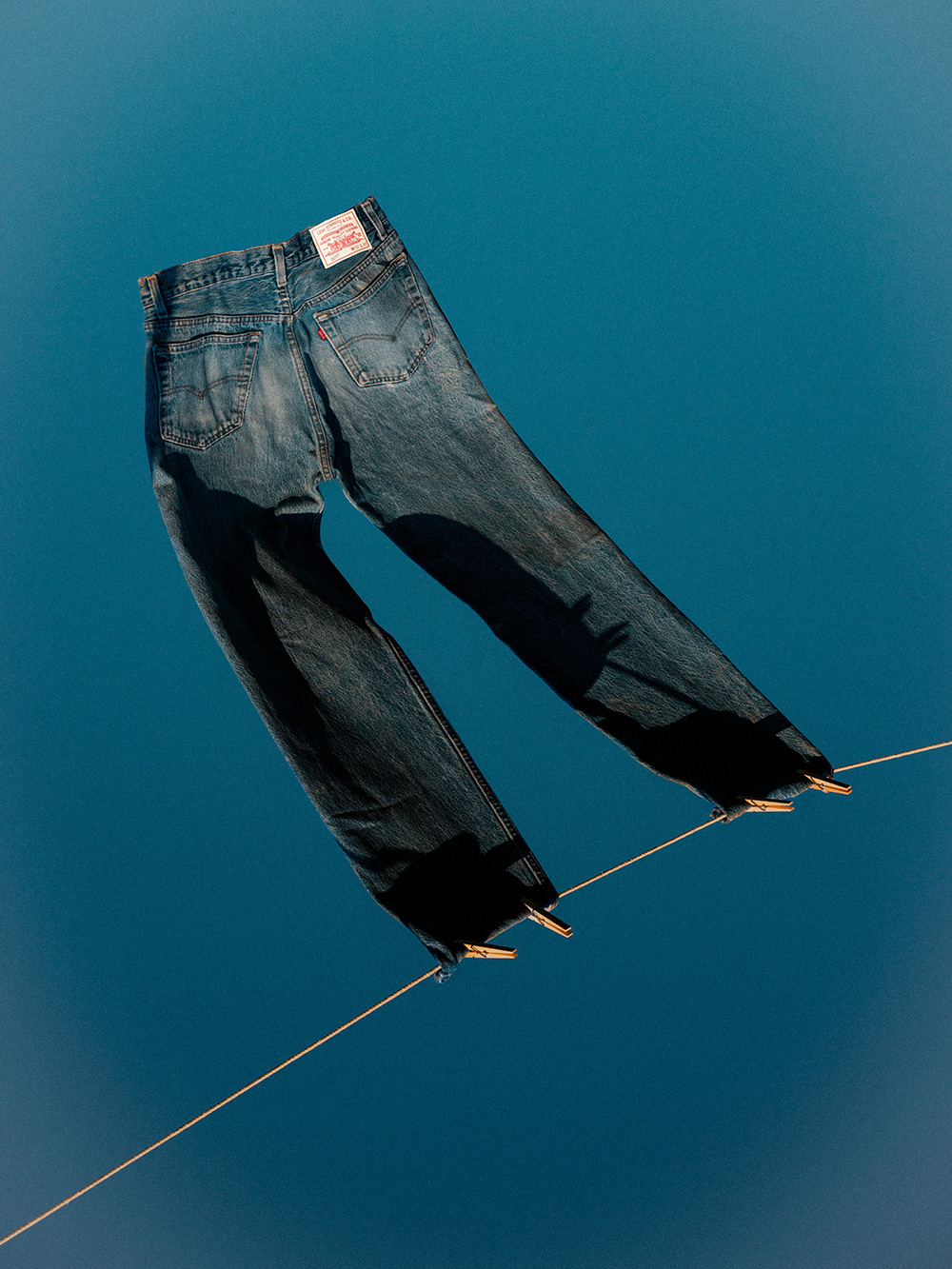Levi’s Wants to Recycle Your Jeans

Every second of every day, a garbage truck’s worth of textiles find their way into global landfills. Garments made of natural fabrics like cotton biodegrade in a few weeks or months, but synthetic fabrics such as polyester—a plastic derived from petroleum—might take two or more centuries to break down.
To keep its jeans out of the trash, Levi’s has spent the past decade developing clothing made of recycled fibres that can be recycled again at the end of its life. The Circular 501 jeans, unveiled last year, are a reimagining of the brand’s iconic 501s—worn by John Wayne, Marilyn Monroe and Henry Rollins alike. Made from organic cotton, wood pulp and repurposed textiles, the jeans are 100 per cent recyclable.
To achieve this, Levi’s worked with Swedish textile-recycling company Renewcell. Its process involves stripping out zippers, buttons, garment labels and other non-recyclables from clothing and mechanically shredding the remaining material. Then comes chemical recycling, in which cotton and cellulose fibres are dissolved into a pulp proprietarily named Circulose. That product can be blended with other fibres to create things like, say, 501 jeans.
Only certain fibres can be recycled—namely, cotton and types of cellulose, like lyocell and modal. Herein lies a major hurdle: blended fabrics. “One of the challenges with circularity is that you can’t have it all,” says Paul Dillinger, the head of global product innovation at Levi Strauss & Co. For example, Levi’s still makes some styles with stretchy elastane, which destroys their circularity. “I wish they didn’t exist, but the customer loves them,” Dillinger says.
Even 100 per cent recyclable cotton garments have significant environmental impacts: Much of the world’s cotton is produced in places battling water scarcity. In India—the world’s top cotton producer—it takes 22,500 litres of water to make one kilogram of cotton, and the denim dyeing and washing process consumes thousands more. Then there are the impacts of the pesticides used to grow cotton. Also in India, two in five cotton farmers have experienced pesticide poisoning in the past year.
Nora Eslander, head of communications at Renewcell, says improving circularity in the fashion industry depends on a few key factors: brands committing to better materials and designing for end-of-life; governments stepping up efforts to fund and promote textile recycling; and clothing-recycling initiatives getting adequate support to scale rapidly.
Consumers also need to be invested in buying clothing that is worth keeping for longer, says Levi’s Dillinger. Achieving that takes the willpower to resist a good sale and the resolve to invest in better-quality items. “501s should be in your wardrobe for about 10 years—and they’re probably still good even longer.”
This article appears in print in the winter 2023 issue of Canadian Business magazine. Buy the issue for $7.99 or better yet, subscribe to the quarterly print magazine for just $40.










